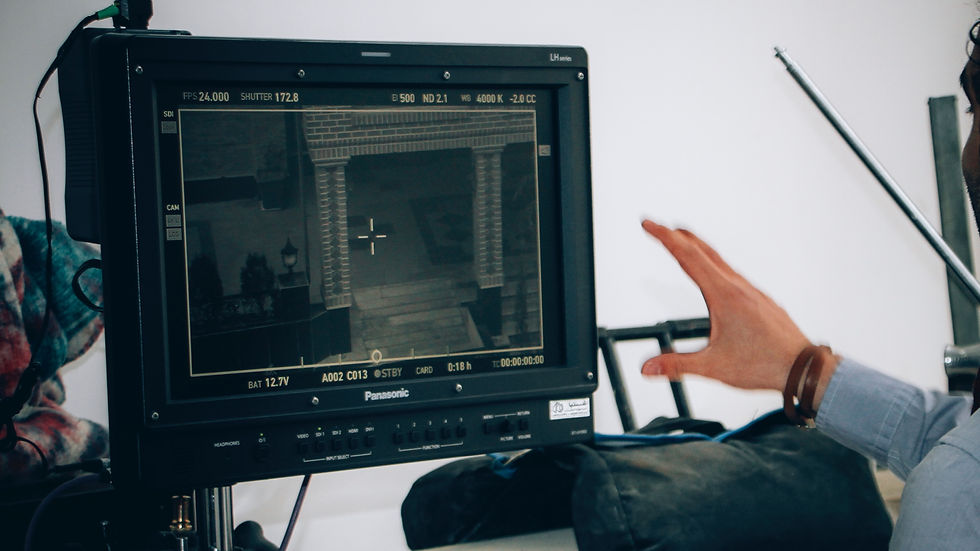Setting the scene using elements from mise-on-scene to create copy with a kick
- gillianjones48
- Mar 23, 2021
- 4 min read
When you’re creating a storyline for a series of emails, a sales page, an about page or an article or blog - the goal is to create a piece of copy that draws your audience in. You will ideally write for your ideal customer, that one person you’re writing for, so they will take action at the end. In order to make them take action, to buy whatever you’re selling or subscribe to whatever it is you want them to, you need to make sure all the elements come together beautifully, all of the different elements flowing in a cohesive way in order to reach a satisfactory ending. An ending that will hopefully end in a meaningful course of action carried out by your reader.

Today, I’m talking to you about mise en scene, a term used in the film world to describe the setting of a scene, the visual presentation of a story, one that creates the mood, the scene, and communicates a lot of information to the viewer, but in this case, of course, it is the reader.
There are many different elements to creating the mise en scene, I’ve just picked 5 of them. Hopefully, you can take them to help with your own copy.
Storyboarding - the beginning. One of the key elements of the mise en scene is storyboarding and the framing of the shot. This is all about the compositions, camera movements and framing. However, in copywriting it’s all about the preparation involved before you create your email sequence/blog/sales page. Who is in your story, what emotion are you trying to create, what props will you rely on, what agitations are you going to poke and when will you bring each element into the story.
Production design. This the backdrop of the story, where is it taking place, what’s the setting, where is it? You want to create a believable story, whether it’s about someone preparing a meal, or getting ready to go out for the evening, it’s got to be something that will connect with your audience. You will therefore need to create a story that’s believable, that will connect with your readers. It needs to sound authentic, with a good hook at the beginning, a middle that still keeps the reader interested, and a great ending that makes the reader want to take a course of action based on what you’ve told them up until now.
Lighting. In copywriting this is all about elevating your story and creating a believable aesthetic. You’re setting the scene by creating a mood, using words that will keep people on target. What emotion are you trying to conjure up, fear, scarcity, fill them with love and light or are you creating a sense of urgency? Will this story be dark or light? What words will you use to create the scene?
Clothing and costume. This is the part in a film where the characters are dressed for the story, whether it’s a western set in the 19th century or a 1920s bar. In your copy, you’ll be creating the kind of scene your character would live in, in real life. Your ideal customer has certain problems, issues that only you can solve, or at least you want them to think that. If it’s a busy wife running a business from home, then she’s not going to be surrounding by city types and wearing a suit, if he’s a farmer and you’re trying to sell him some useful equipment that will make a massive difference to their lives and save time, then he’s not going to be driving a fast car near the coast.
Is the story you’re creating realistic in terms of your ideal customer? What are they wearing, try to imagine them in the same room. What do they do, what kind of food do they eat, what do they do in their spare time? You want the avatar in your story to be as authentic and as true to life as possible, whatever you do, you don’t want to miss the mark completely. Make sure you do your research before you start. You’re not going to make a sale if the character and the story you’re trying to build doesn’t resonate with the reader.
Texture. What kind of an image are you trying to create? It doesn’t have to be Charles Dickens story full of several characters and places, but you are going to be creating a scene that’s going to make them think carefully about their own situation and whether or not you have what they need. Is there a sad element to your copy, or a happy, positive one, what type of person would this resonate with? Make it believable, make it rich, authentic, believable and real to them.
By thinking about all these different elements you are creating a powerful story with a scene-stealing role for your customer, taking centre stage, at the centre of their own narrative. By showing them that you really know them so well, more than they know themselves, you’re more likely to hit the mark than if you were talking to everyone or no one in particular.



Comments